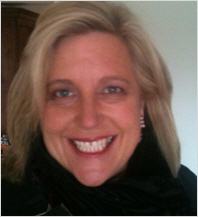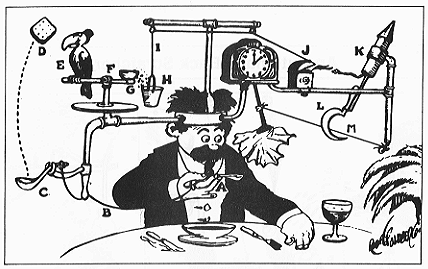The Nancy Dickenson Interview: Copying Others Is Not The Answer
Recently, we had the pleasure of sitting down to pick the brain of Nancy Dickenson, talented UX designer and the Executive in Residence for Bentley University’s HFID Graduate Program. With a bit of back and forth, we got some wonderful insight into the UX field from this long-time field participant and shaper, who looks back over her time in UX design.
We are very appreciative of Nancy taking the time to answer our questions and provide this glimpse into the evolution of the field of UX. We hope our readers enjoy the interview as much as we did collecting the information for you. Get ready for an engaging conversation.
Interview
Q: Nancy, where was your first job (in technology)?
At Apple Computer.
 Nancy Dickenson
Nancy Dickenson
Q: Wow, what’s it been like watching Apple evolve over the years, having once been on the inside?
It was great to see how Steve Jobs’ return brought focus to the many smart, talented people working at Apple. The jury is now out on whether they’ll be able to self-organize without his strong POV leading the way.
Q: First user experience you designed (in whole or in part)?
The American Sign Language Dictionary CD-ROM.
Q: Last app you used today?
Yelp, TaskRabbit and Uber.
Q: How would you describe your style?
Open, passionate about new ideas.
Q: Why are you a user experience designer? What was it that drew you to UX?
UX is profession that we’re defining as we do it. I like that. The need for easy-to-use, useful products that exceed users’ expectations is as relevant today as it was when I started my career at Apple in the 1980s.
Q: Very good point! Do you find that most people understand UX or take it for granted? Has this changed over the years?
UX is increasingly becoming an accepted part of successful product and service creation and delivery. Whether you’re a product manager, developer or experience designer, everyone must engage in creative problem-solving and user-informed product strategy. Experience designers are no longer the only ones responsible for advocating for the user — the whole team is.
Q: What other less-related jobs have you worked in previous to design?
I sang in a band in the 1970s. Leading a band was my first lesson in managing creative talent (especially engineers!).
Q: Cool! What was the name of the band?
Nothing fancy: Nancy Dickenson Quartet. We played jazz at the Shadowbrook in Capitola and a lot of weddings. :)
Q: We’d love to learn more about your workflow and how you approach problem-solving. Could you tell us a bit about your personal process? How do you get started on a new project?
I start by seeking user insights that overlap with opportunities in the market. I follow this research with rapid idea generation and experimental prototyping. I call my creative problem-solving approach “Think, Make, Show.” “Think, Make, Show” is also a course that I taught for Bentley University’s Certificate Program in 2011.
Q: Good process! Did you make many converts to your process? In other words, did you get a good response from your students? Anything they were resistant to?
The phrase I repeat a great deal is, “Know the user, and know you’re not the user.” I didn’t pen the phrase, but unfortunately can’t remember who I got it from. Whoever it was, I thank them for it.
Q: When you work on a project, is there a particular element of UX design that you prefer to focus on, or would you just as soon work on any or all of it?
I am usually involved most with strategic direction, leadership, training, and management of experience design teams.
Q: So, at the head head of the pack, just like your days in the band. What’s the most important quality for a member of your team to possess?
The most talented designer is not always the most successful designer. Great UX folks start with being excellent designers (or researchers or writers), but then they go further. They are experts at gathering up-to-date knowledge of UX trends and industry competitors, and they are practiced, skillful communicators. These three areas together make a star UX professional: UX craft, relevant expert knowledge and skillful communication. The most successful UX folks on my teams embrace this idea and build learning opportunities around it.
Q: Speaking of your process, what hardware, software and other tools do you use?
Everything: Android and iOS mobile devices, Mac, PC, etc.
Q: What is your opinion of the fragmentation Android has created in the market? Do you see this as a positive or negative?
I love operating system disruptions! The complexity makes our heads hurt and brings us into a vibrant and creative period. From software application design to website design to service design to ecosystem design across form factors, each has opened up new opportunities for user experience to provide an ever more strategic contribution that delights users and helps businesses succeed.
Q: What would you consider the most misunderstood aspect of UX design?
Many companies confuse design thinking and design — design thinking is user-centered, strategic, creative problem-solving. That is a skill that all product roles should take part in. UX designers should be positioned to lead design thinking because they also bring their specific designer skills, knowledge and talent to both strategizing and executing great products.
Often, designers are not viewed as a strategic resource. As such, they are only invited into the product process during final execution, to “make the pages pretty.” Apple’s products have significantly changed users’ expectations — the technology and the design must now succeed together. By doing this, Apple raised its market capitalization to become the most valuable company in the world. No technology product company today can afford to cut design out of the product strategy conversation, but 98% of all companies don’t have a clue how to do it.
Q: You bring up a good point. What do you think we as an industry can do to correct this potentially costly error in judgment? How can we do a better job of making this point to businesses outside of our field?
Too often, companies think that copying Apple is the answer. I’ve heard executives say, “Go hire me a bunch of Steve Jobs.” That would be a disaster for 99% of companies. The answer is to focus on targeting the company challenges that UX is best suited to drive solutions for. For some companies, that might be giving UX authority to determine which new features will delight users and drive buzz (word of mouth), or which new features have the best chance of driving faster user-adoption rates and/or sustaining longer user-loyalty metrics.

Illustration by Rube Goldberg.
Q: What are the main lessons you’ve learned throughout your work in UX?
To be, as Bill Gribbons often says, “a student of humankind.” It’s a great way to work and to live.
Q: What were the most remarkable “A-ha!” moments in your career? What were the most decisive moments that changed the way you approach UX projects?
Learning to be a facilitative leader of teams was a key turning point for me. In fast-paced organizations, nuanced delegation drives the right level of involvement, authority and motivation critical to creating successful, agile teams. These types of teams effectively balance the contributions of business, design and technology.
Q: Who would you say has had the biggest influence on you as a UX designer and why?
I have been very lucky to have many mentors, but working at Apple in the 1980s was the seminal event in my career. Michael Tchao was my mentor. He was, and still is, a rock star.
Q: If you could choose it, what would your legacy in the industry be? What is it that you want to be remembered for?
I hope that my legacy lies in playing a part in inventing and growing UX design and research from a concept into a profession. Through this, I hope to increase the number of smart people who find gainful, satisfying work as UX professionals.
Further Reading
- Stefan Sagmeister Interview
- Women In Web Design: Group Interview
- Andres Glusman On The Power Of UX And Lean Startup Methods
- When Do We Need A Design System? An Interview With Brad Frost




 SurveyJS: White-Label Survey Solution for Your JS App
SurveyJS: White-Label Survey Solution for Your JS App Agent Ready is the new Headless
Agent Ready is the new Headless



